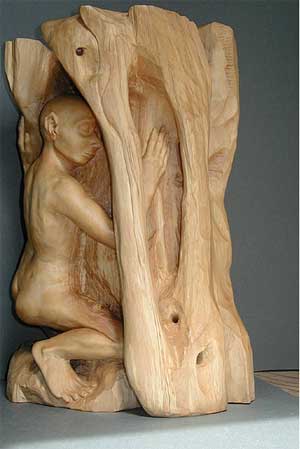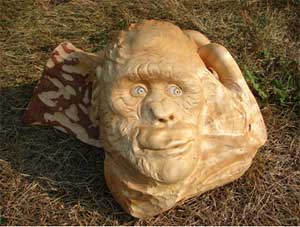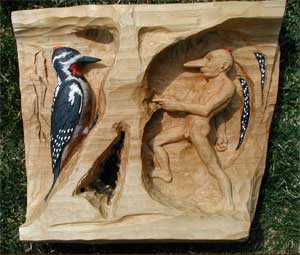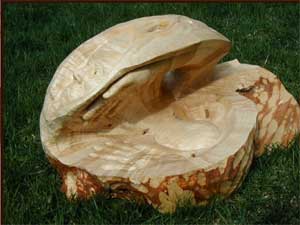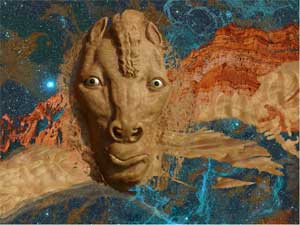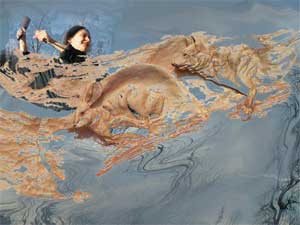
Caril Chasens lives “way up a bush road,” in British Columbia, Canada. She hauls water in buckets from the creek and turns on a generatorwhen she wants to use her computer. In large part, that locale is an important part of how she came to her present involvement with woodcarving: her back-to-the-land lifestyle involved carpentry and log building.
“I think there is a feeling of place in my work,” Caril says — most of her wood sources are also local to her area, and the sense of the environment is important to her.
Self-taught in drawing and painting, Caril made her first wood carving in 1992. It was a bear, made from birch wood, and, “I was dissatisfied with the little carving standing alone on the bench, so I carved an environment for her,” Caril said.
From there, Caril has progressed into making sculptural relief carvingsand, her current concentration, pieces that she calls “Molten Wood”: they combine her wooden sculptures with digitally created background environments. The inspiration for this came in part from yet another medium: photography.
“Pictures of sculptures may be well composed and show what the woodcarving looks like from the camera’s view,” Caril said, “but I found them lacking as artworks in themselves.” By “messing around with graphics software,” she began creating the Molten Wood digital collages. In those pictures, she says, “Wood, pictured with its complexity and grain, is exciting material for digital selection techniques.”
Of course, first she needs to create the wood sculpture carvings to photograph. These, Caril makes with hand tools, frequently from birch wood. She particularly likes birch burl. As for other preferred woods, Caril says, “Butternut is wonderful, but many of the trees have been destroyed by canker, so there are ethical issues. I have not gotten any new supply since 1995.” The piece she’s working on right now is, in fact, from three joined pieces of birch, with a working title “The Ghost in the Library.”
Most of Caril’s pieces represent people or animals “or creatures that combine the two, within abstracted environment.” The combination of the two creatures is what has happened in a piece Caril cites as among her favorites, “Horsey Face.” The carving, made from a large pine burl, combines human and horse figures.
For this piece and her other projects, Caril said, “I start with a block of wood and an idea. The two evolve together, toward the finished piece. Wood is a particularly expressive medium. The complex grain and structure is a constant adventure.”
